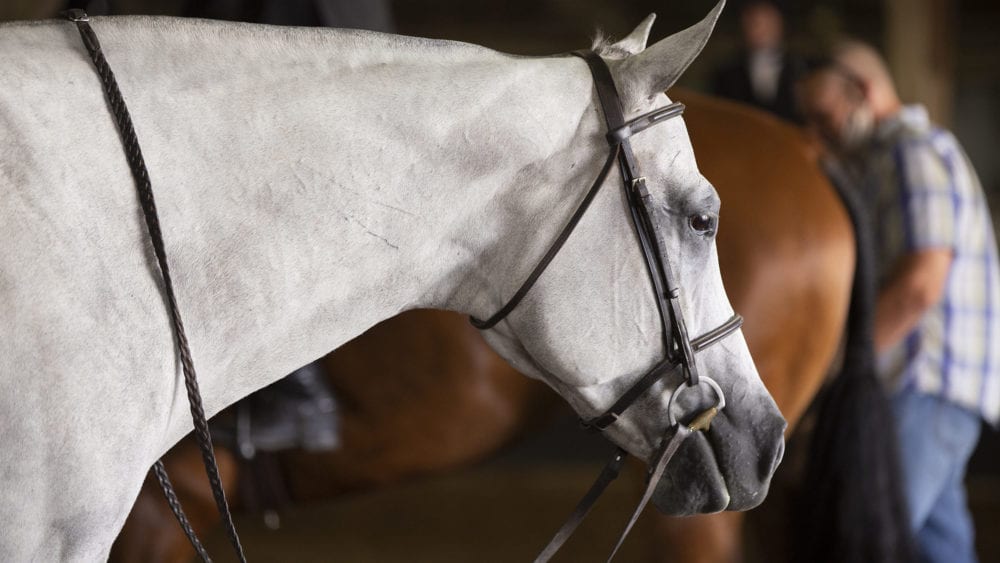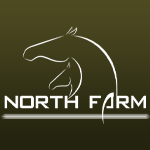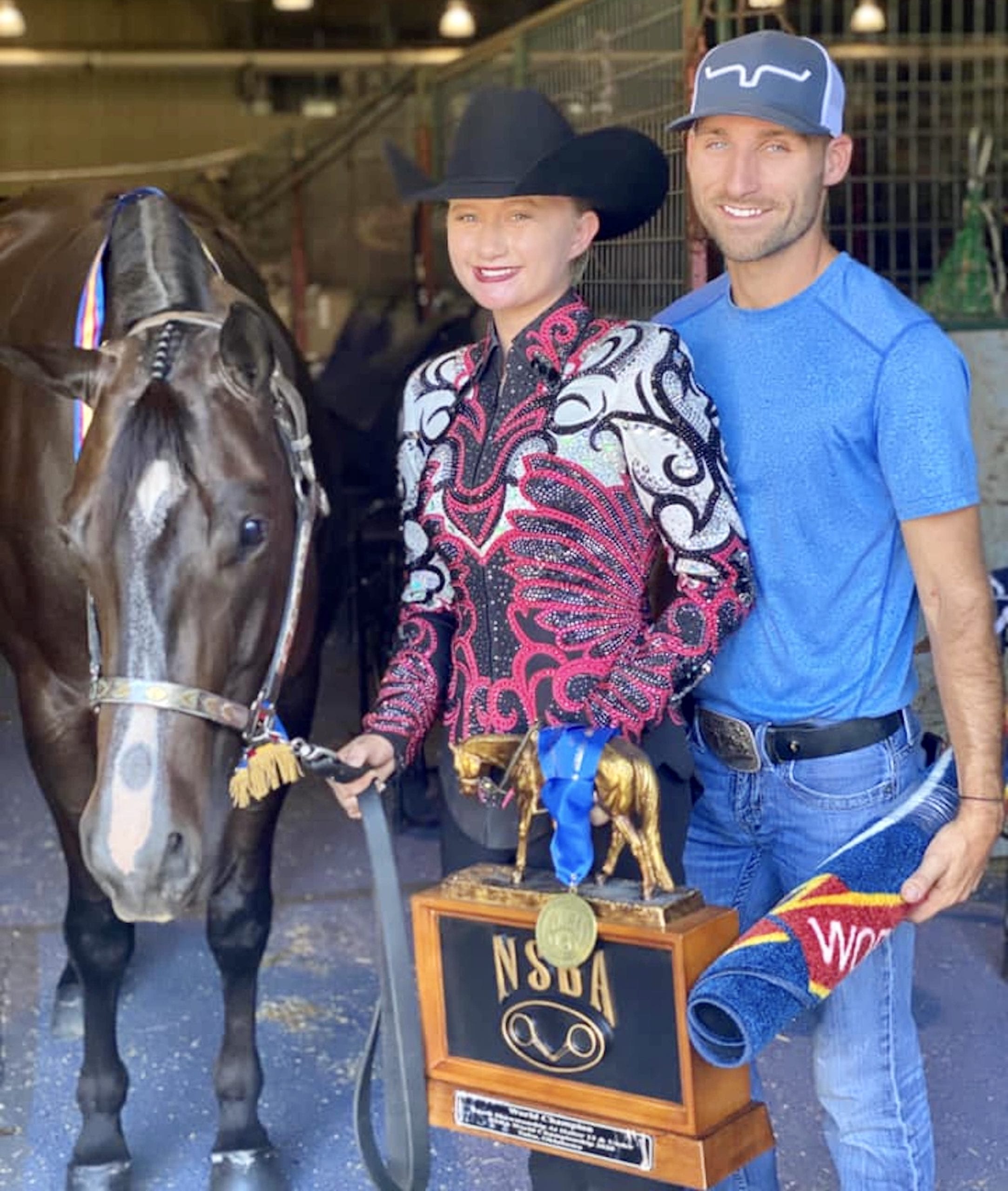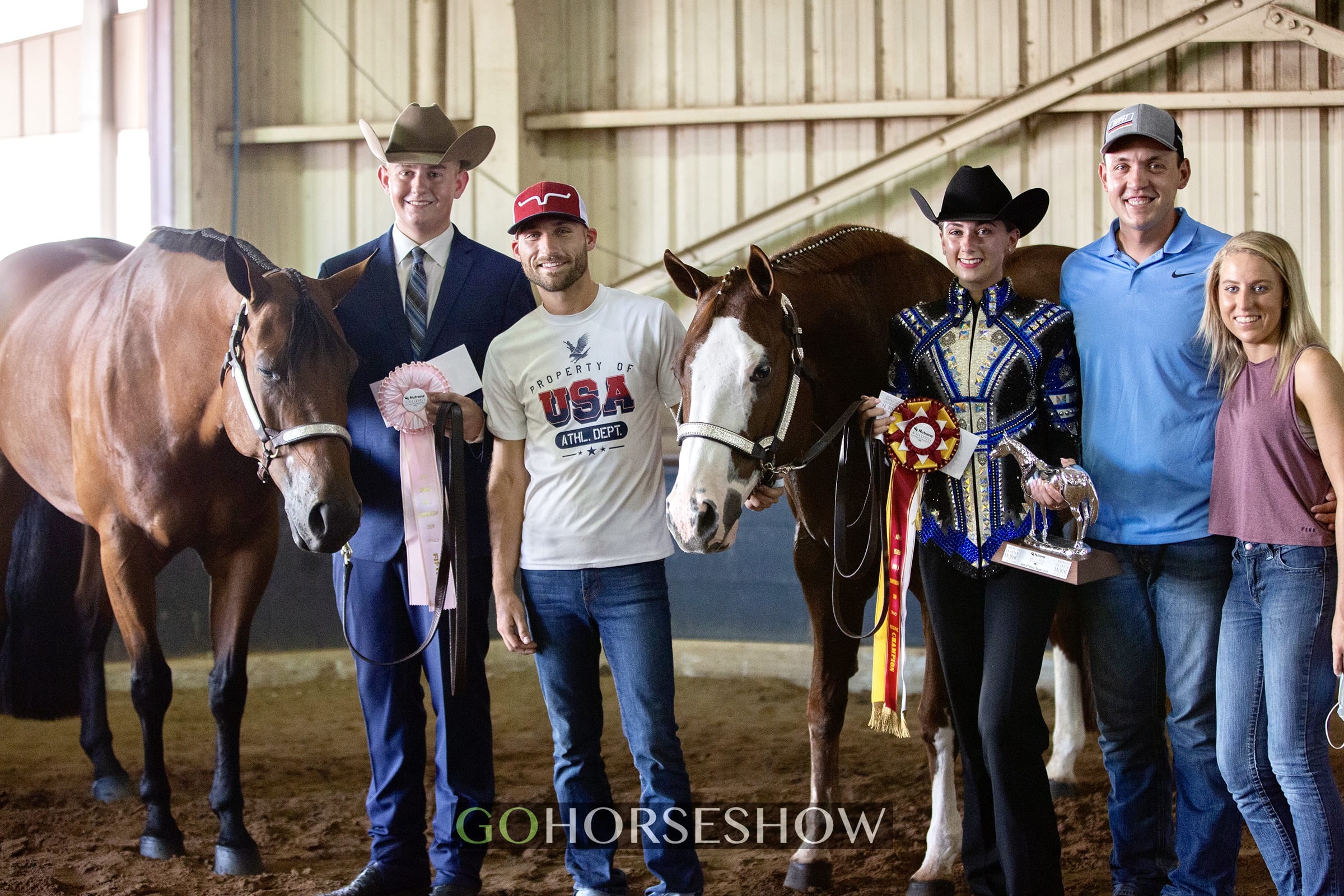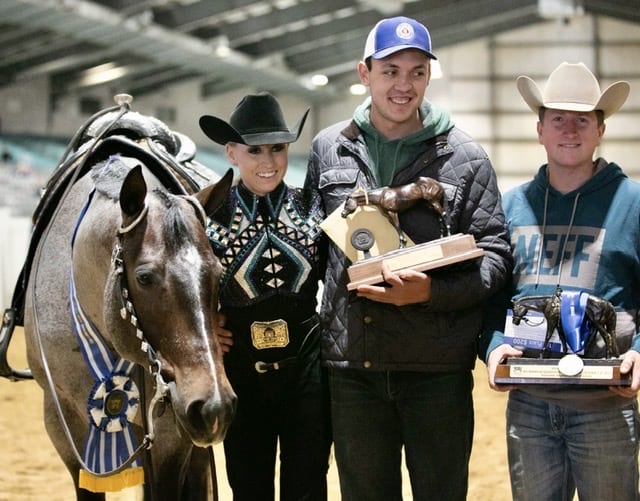The first ride on a new horse can be an intimidating task, but a game-plan for how to conquer it can make things go much smoother. Accomplished trainers Adam Winter of Zeeland, Michigan, and Tyler Schultz from Northern Ohio advise on the best things to do when tackling the first ride.
Test Your Cues
Before attempting anything, Winter says to “test all of your cues: hands, feet, seat, and voice.” Many things contribute to how a horse will respond to various cues. Schultz, who has trained several Congress, World, and National level winners, also says to observe how the horse reacts to multiple signals, and ask yourself, “Does it take pressure well? Does it get grumpy? How does it react to contact?”
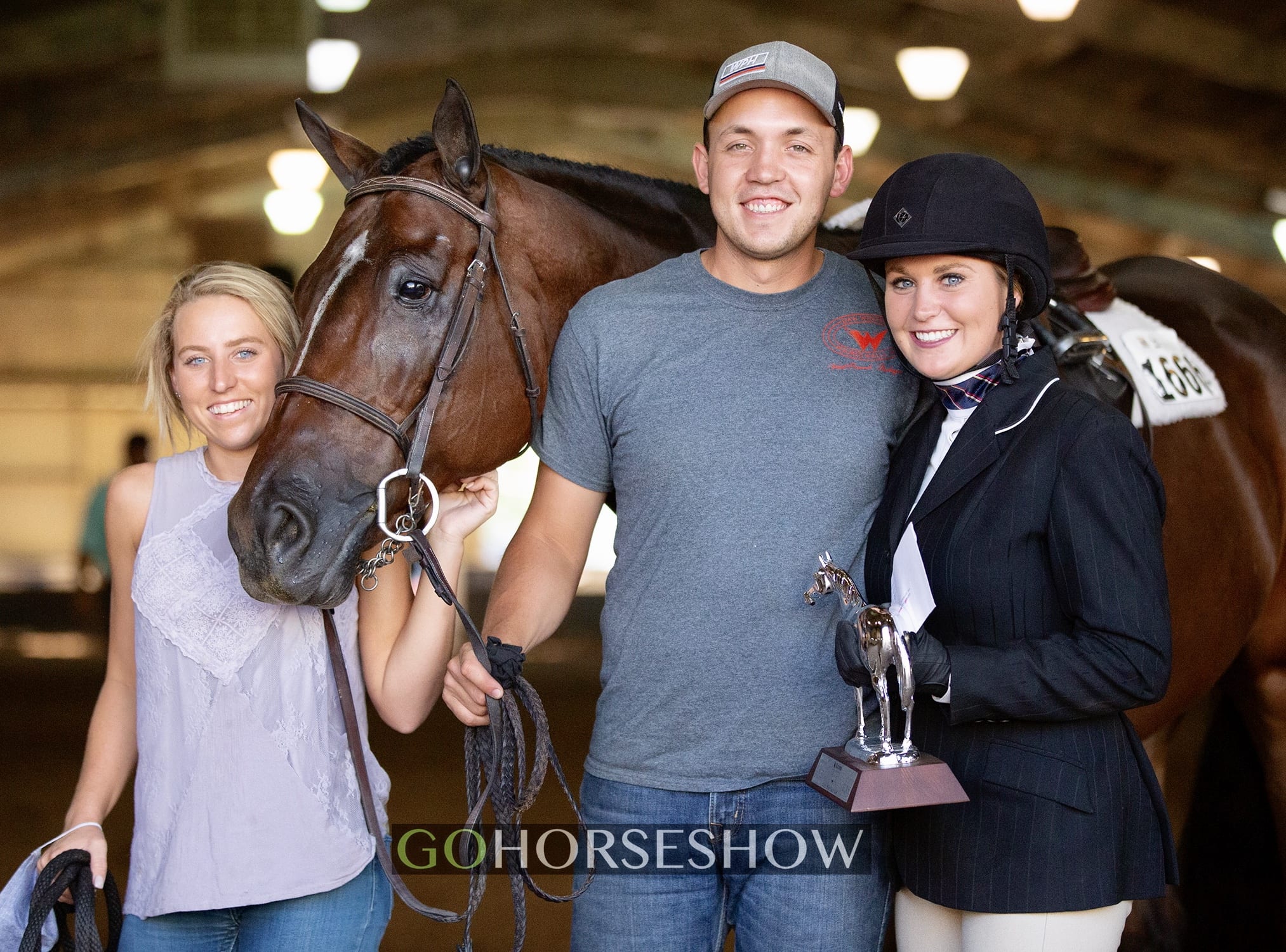 Allow the Horse to Demonstrate What it Knows
Allow the Horse to Demonstrate What it Knows
Winter (pictured right), who has trained multiple Congress winners, recommends that you “give the horse a chance to show you what it knows before assuming that it knows something.” Jumping right into complicated maneuvers or a high caliber pattern will do nothing but frustrate both you and the horse – start small. It is vital to learn what abilities the horse already has, and knows well, before attempting anything too complicated.
Practice Maneuvers
After testing your cues and gaining knowledge about the horse’s present abilities, Winter says that he would advise a client to practice various maneuvers. This is especially important if you are planning on doing patterns with the horse. He says to “pay attention to which maneuvers both you and the horse excel at, as well as which maneuvers seem to be an area of weakness.”
Both of our experts say to “practice your transitions.” Transitions are something that is often overlooked in the grand scheme of things, but is extremely vital. In practicing transitions, the ability to construct a game-plan for a pattern or class becomes much more manageable and will increase your chances for a finished look.
Attempt Pieces of Patterns
“Knowing what the horse can handle before walking up to the cone is extremely important,” says Tyler (pictured left). After practicing both maneuvers and transitions, it is essential to know how the horse will react when all of the pieces are put together in a pattern setting. Adam mentions that “simply stopping to stand at a cone can tell you a lot about how the horse will react when put in a pattern situation.”
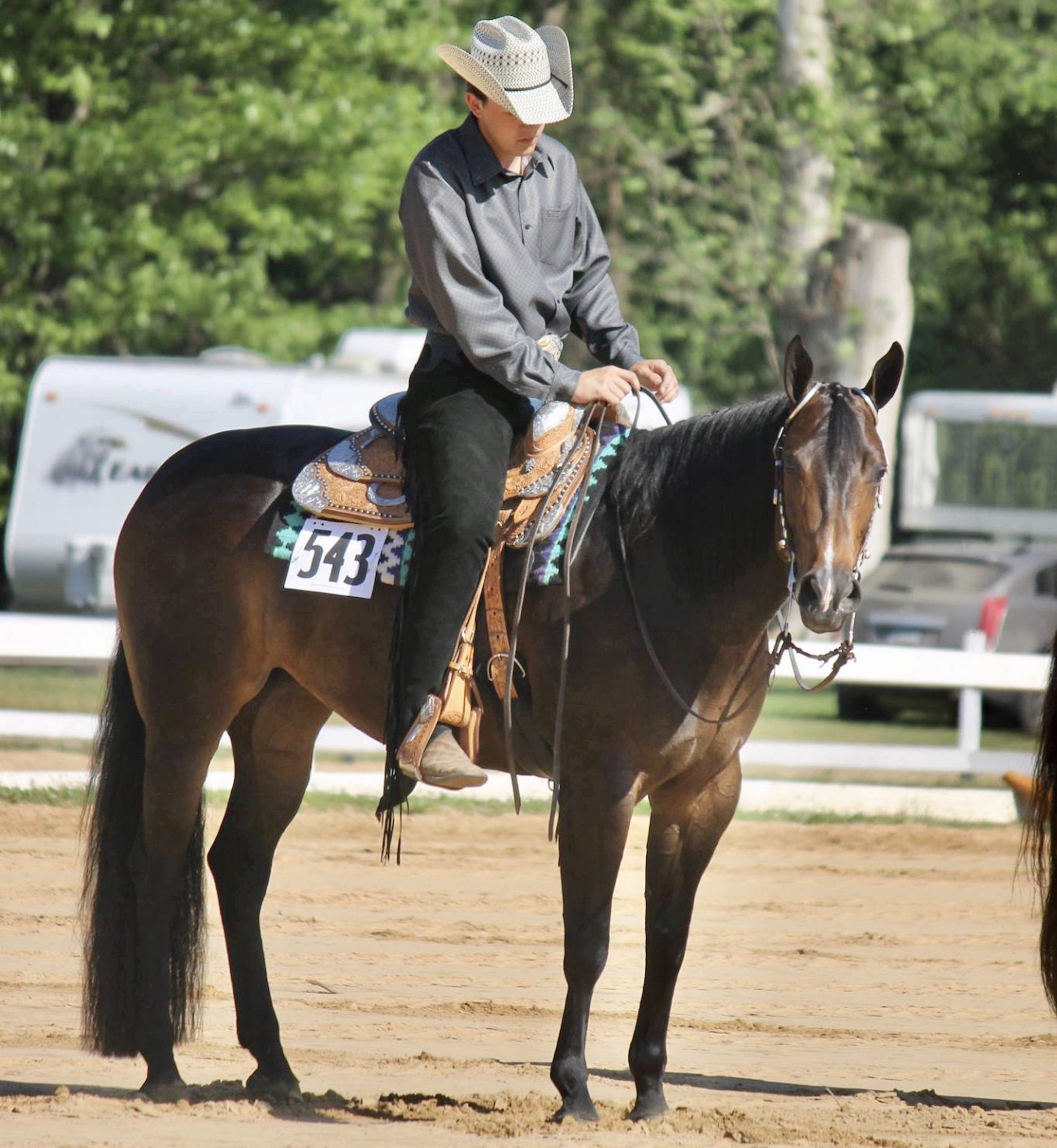 Observe When the Horse is Most Productive
Observe When the Horse is Most Productive
When riding a new horse, and when planning for future rides, it is crucial to know when you and the horse can be most productive. “Observe if, at any point in your ride, you feel as though you’ve ‘hit a wall’ and are no longer being productive,” says Winter. He adds that “from a training perspective, I want to know that what I am trying to accomplish is worthwhile. If I know that I can only get twenty-five minutes of productive work in before the horse needs a break, I can make each ride as effective as possible.”
Praise the Horse
Adam says that, “it is important to find spots in your ride to praise and reward the horse,” and reminds us that, “in a new experience for both horse and rider, the horse is just as uncomfortable as you are.” Tyler adds, “it’s amazing what horses will take from a simple pet. Let the horse know that you are confident so that they can be too.”
Whether you are trying a horse to potentially buy or need to get the first ride under your belt, both trainers advise gaining information about the horse beforehand. “Think about whether you’ve seen the horse shown before,” says Winter. “And ask previous trainers and riders what they have done in the past to get the most out of the horse.”
Schultz explains that “even negative feedback is useful” when learning about a new horse and what to expect in the first ride. Having as much information as possible before riding a new horse is going to make you better prepared for all future rides.
It is always important to ask yourself what your end goal for any horse is. Tyler says, “When trying a potential new horse for a client, I ask myself who the horse is for and what I want them to be able to accomplish.” He adds that “not every horse needs to be Open quality,” and that “the ones which are great minded or are fit for the Novice classes are worth their weight in gold, alone.”
Keep an Open Mind
These trainers emphasize that the most important thing is to keep an open mind. “Some horses take longer to figure things out than others,” says Tyler. Adam adds that “forming a connection takes time.” Allowing yourself to be proud of small improvements will foster a better working relationship between you and the horse moving forward.


